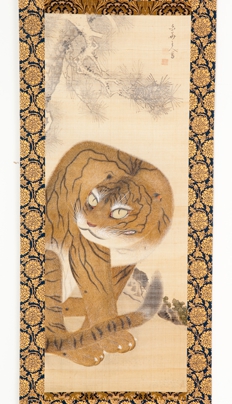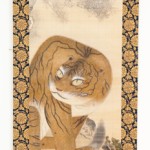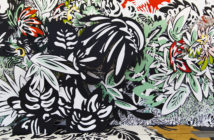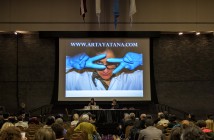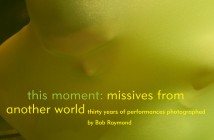Japan, Edo Period, 18th century
Hanging scroll; ink and color on silk
Honolulu Academy of Arts,
Richard Lane Collection (2007.143)
The acquisition of the collection began with a letter sent from Richard Lane to Stephen Little in 1993. In the letter, Lane requested images of artworks at the Honolulu Museum of Art for his latest publication and offered to bestow his library of 8-10,000 books he had collected on Japanese art to the museum after his death. Ten years later when Lane did pass away without a will or an heir, this letter would become the ticket for which Little, on behalf of the museum would acquire Lane’s collection. After being informed by the Japanese court of Lane’s passing away and the claiming of the library, he traveled to Kyoto where he was taken to Lane’s private home.
Dr. Stephen Little showed images of Lane’s basement jam-packed with 400+ boxes, full of rare editions of Japanese books and catalogs, piled to the ceiling. There were also images of smaller rooms filled with 20,000+ scrolls, prints, folding screens, and manuscripts. These were objects amassed through daily purchases and stored in a nature typical of a hoarder. Because many of the artworks were severely damaged and/or forgeries and because the Kyoto court had sought the opinions of the very same scholars Lane had offended during his life, the collection was deemed as "junk". However, Little believed that among the mass of junk, there had to be treasure. Sifting through the collection, he soon discovered outstanding paintings and prints from the Meiji to Edo period, and several Chinese and Korean ones as well. Soon after, arrangements were made between Honolulu Museum of Art and the Kyoto courts to sell Lane’s collection including all of his belongings.
The lecture was very engaging. There were many humorous and captivating anecdotes Little told of Richard Lane’s life and of his own experiences with the acquisition. The Richard Lane collection continues to be archived and restored at the Honolulu Museum of Art.
Dr. Stephen Little has recently completed his semester as a Visiting Lecturer at Harvard University. Do not miss an opportunity to hear Stephen Little talk about the collection.
- Toki Eishö (active late 18th century) Japan, Edo Period, 18th century Hanging scroll; ink and color on silk Honolulu Academy of Arts, Richard Lane Collection (2007.143)

